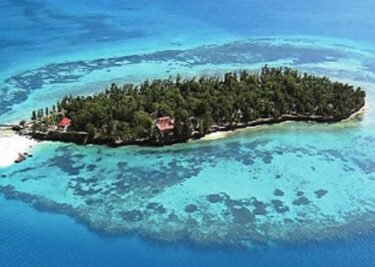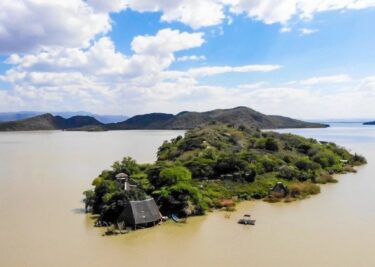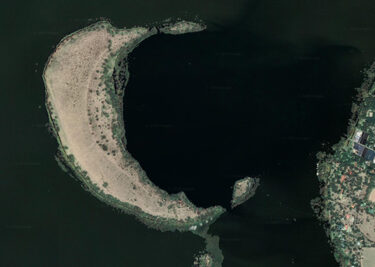Cathedral Island

Cathedral Rock sourced from Malindi Kenya
The Rift Valley hosts most of Kenya’s dazzling and precious lakes. Shallow picturesque lakes, freshwater lakes, and saline lakes are all found in the area. These lakes, irrespective of their nature, are rich in biodiversity that attracts both local and international tourists drawn in by their unique fauna and flora. Notably, the Kenya Lake System in the Great Rift Valley and Lake Turkana National Parks is listed among the UNESCO World Heritage Sites. The lakes have features more breathtaking than just the wide expanses of their waters.
Lake Logipi
While Lake Turkana is the spectacle of Northern Kenya, there’s another water body in the north apart from the world’s largest permanent desert lake. Just south of Lake Turkana, at the northern end of the Suguta Valley in Samburu, lies an emerald water mass. While it is unknown to many, the stunning Lake Logipi sits in its own magic and beauty, effortlessly.
It is believed that Lake Logipi and Lake Turkana were once one. This was before they were separated in the late 19th and early 20th centuries by the eruption of the Barrier Volcanic Complex; a group of four overlapping volcanoes that broke Lake Turkana off from the broader Suguta trough. With this separation, Lake Logipi found itself on the Suguta side of the valley while Lake Turkana remained in the Turkana Basin.
This petite lake: 6km in length and 3km in width is about 5km deep and is endowed with sodium bicarbonate, which makes it very alkaline. The northern shoreline jets water into the lake during arid times, and on rainy days, the seasonal River Suguta morphs into a temporary lake called Alablab, which rejuvenates Logipi as it joins it.
Being a soda lake, it can be assumed that Lake Logipi has minimal life. But, its size doesn’t limit it from being rich in valuable resources. Logipi is inhabited by cyanobacteria and phytoplankton – green algae – responsible for its appearance. These microscopic fauna and flora attract flamingoes that feed on them from as far as the Nakuru and Bogoria lakes. Their pink hue and the lake’s brown silty shore create a diverse colour palette on the desert ecosystem.
The Rock on Logipi
Yet, these features aren’t the only ones that will catch your attention. At the centre of Logipi rises a magnificent rocky presence. Brown in colour and backdropped by the lake’s greenness, the rock is a spectacle on the small lake.
It sits on the alkaline water at about 370 metres in height like a diocesan cathedral; hence, its name: Cathedral Rock or Naperito.
Cathedral Rock is Lake Logipi’s islet and it’s more than just an accessory to the lake. The island, just like the lake’s northern shoreline, also jets out saline water. This quenches the lake in times of extreme drought.
Cathedral Island is a stark contrast to the well-known islands of the Kenyan Coast and Lake Victoria. It’s a secret well-kept from the eyes of many. It only lets in wayfarers audacious enough to seek it and dwell in its magnificence amidst a gorgeous lake.
Did you know about Lake Logipi and Cathedral Island?



